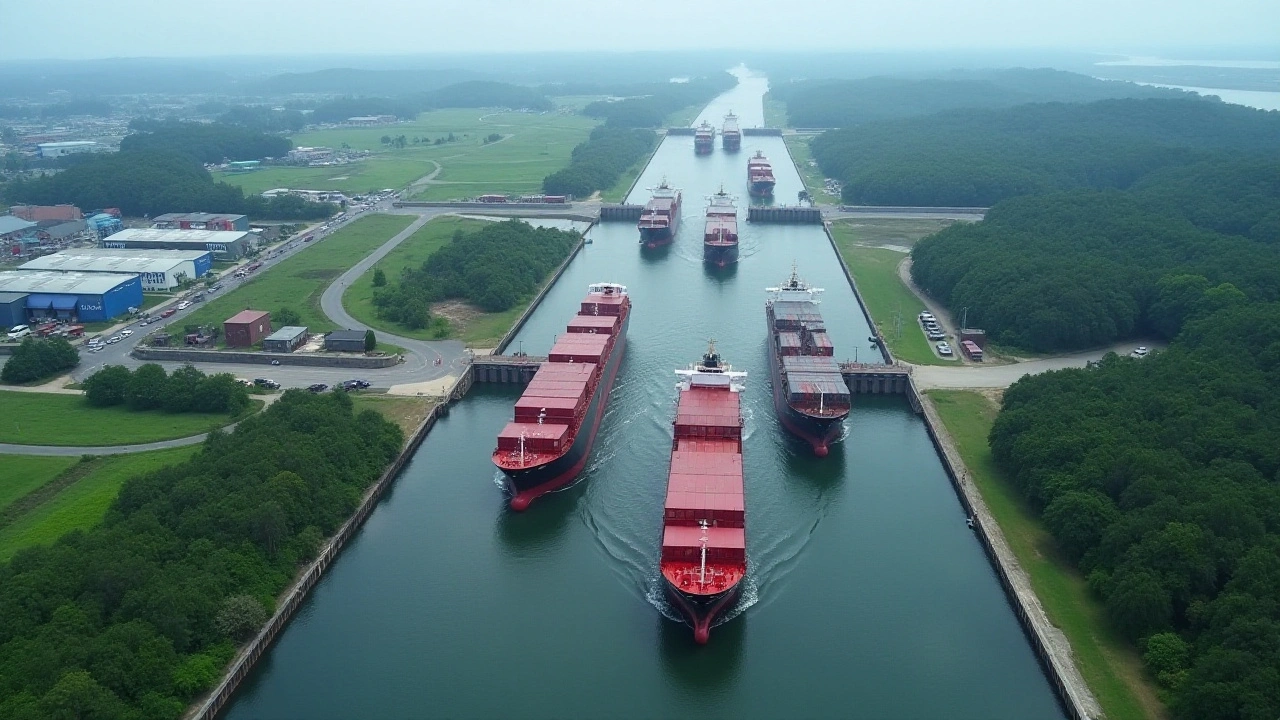Panama Canal: Why it matters for global trade and Africa
The Panama Canal is a short waterway with huge power. It links the Atlantic and Pacific Oceans, saving ships thousands of miles of sailing around South America. That cut in distance means lower fuel costs, faster deliveries and cheaper goods — all of which ripple through supply chains from Asia to Africa and the Americas.
For African exporters and importers, the canal changes routing choices. Cargo going from West Africa to the U.S. East Coast or to the Pacific coast of South America often passes through Panama because it's faster and usually cheaper than going around the Cape of Good Hope. When the canal is congested or tolls rise, shipping lines reroute via Africa or the Suez, pushing up freight rates and delivery times for businesses and consumers back home.
How the canal works and why the 2016 expansion matters
The canal uses locks to lift ships above sea level and then lower them again. In 2016, a big expansion added new, larger locks. That allowed Neopanamax ships—much bigger container vessels—to pass through. Bigger ships carry more containers at once, which can lower per-unit shipping costs. But not every port in Africa can handle those large ships, so cargo often moves through hub ports in North Africa, West Africa or South Africa before reaching final destinations.
Practical impacts on prices, schedules and ports
Shipping through Panama affects prices at three points: freight rates, transit time, and port handling. If the canal is running smoothly, freight rates fall and schedules tighten. If there’s a backlog, carriers delay sailings or choose longer routes. That can make imported goods more expensive and slow exports hitting markets on time.
African ports respond by improving capacity and offering fast transshipment services. Lagos, Durban and Tanger Med, for example, have pushed upgrades to attract traffic from ships that can’t call smaller ports. Better port links and rail or road connections can turn delays at sea into minimal extra time on land.
Businesses can manage risk by watching canal notices and booking earlier during busy seasons. Freight forwarders often advise clients to allow extra transit days or to use smaller vessels that can call more ports if timing is critical. Buyers should ask suppliers about routing options — Panama, Suez or around the Cape — and compare total time and cost, not just sea freight price.
The Panama Canal is more than a shortcut. It’s a global choke point whose daily rhythm affects shipping costs, delivery windows and port strategy from Cape Town to Casablanca. Follow canal updates, check carrier schedules, and work with logistics partners to keep your supply chain steady when the waterway’s tides shift.
- December 23, 2024
- Comments 10
- Politics

